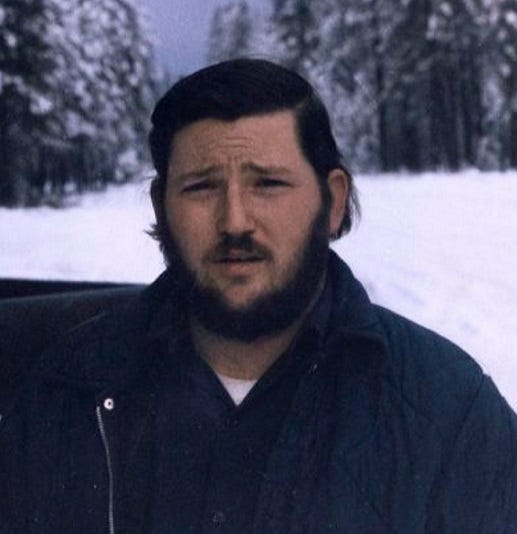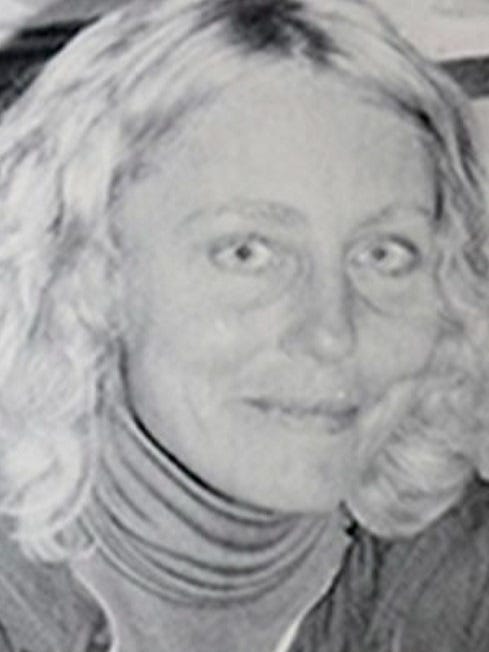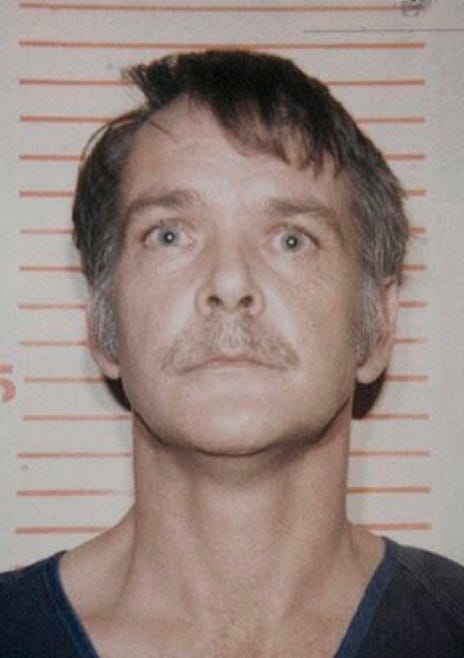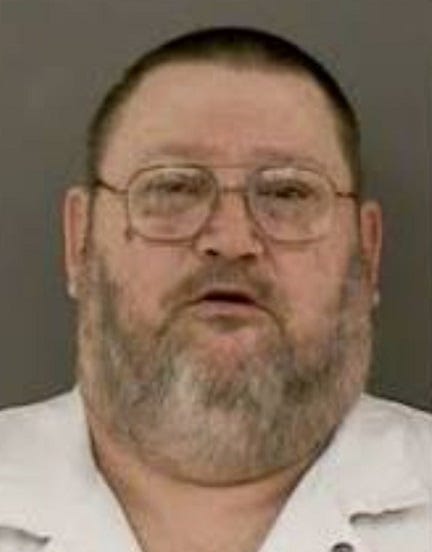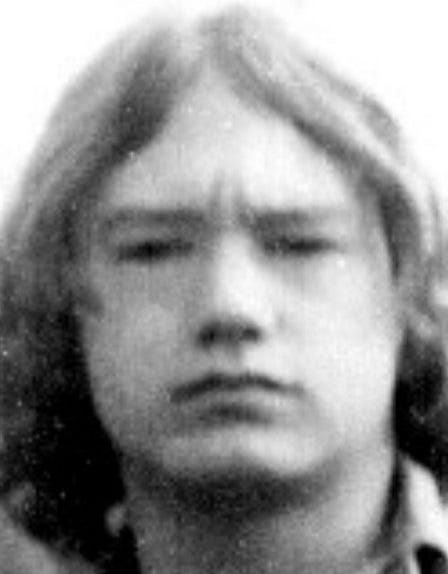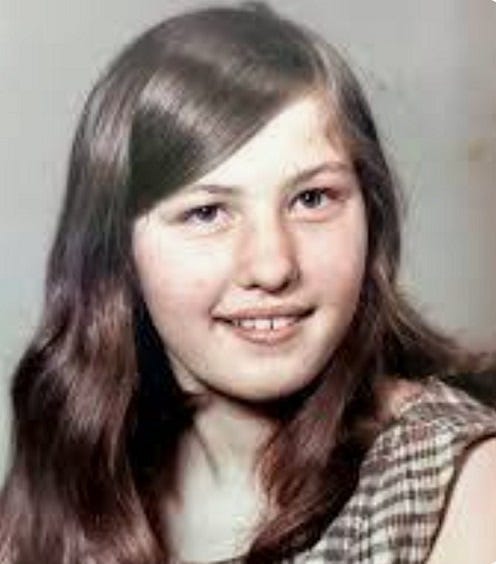Murder Along the Lost Highway: The Crimes of Serial Killer John Ackroyd
On the afternoon of July 10, 1990, thirteen-year-old Rachanda Pickle decided to spend the day lounging around the house she shared with her brother Byron, mother Linda and stepfather John. On summer break from school, she planned on catching up on her favorite television shows while her parents were at work.
Linda would later recall that she had left Channy, as she was known, a list of household chores to complete as she idled away her day. A cleaner at a resort near Sweet Home Oregon, Linda had headed off to work early that morning, as had John, whom she had divorced a year earlier. Unable to make ends meet without the substantial money he earned as a highway mechanic for the state, she had allowed her former spouse to continue living with the family despite the break-up.
While the events of that afternoon remain shrouded in mystery, what is known is that John had knocked off work early, later explaining that a part he needed to repair a snowplow had not been delivered in a timely fashion. With no means of completing his assignment for the day, he had headed home.
According to John, Channy had been on the sofa watching TV when he entered the family’s Santiam Junction home, a small community situated at the juncture of Highway 20 —referred to by some as the Lost Highway —and Oregon 22. Figuring that she was tired of hanging around the house, he suggested that they go for a drive. With a list of chores still hanging over her head, she had declined.
Not wanting to waste the day, John had set off for destinations unknown, leaving Channy home alone once again. When he returned some two hours later, there were no signs of his stepdaughter anywhere.
Later on, when John picked Linda up from work, they discussed Channy’s absence, but neither of them had found her sudden disappearance concerning. Instead of leaping into action, they had gone home where they had dinner, followed by a romp in the hay at John’s request. The latter was an almost unheard occurrence, owing to John’s low libido. When an investigation was finally launched in the case, authorities took note of the odd timing of the rare show of intimacy.
It was only after night had fallen over the valley that Linda wondered aloud if perhaps something had happened to her only daughter. She was also perplexed by the fact that Channy had neglected the chores she had been assigned. A reliable child who bent over backwards to please her mother, it wasn’t like her to shirk her responsibilities.
Unbothered by the odd turn of events, John had advised his former spouse to wait a day before getting law enforcement involved. And with that, the couple pushed thoughts of Channy aside and watched a movie before retiring to the bedroom.
When there was still no word from Channy by the following morning, Linda phoned the police. The officer who took the report noted that there was no sense of urgency in her voice as she explained that her daughter, who was a homebody who never wandered off on her own, hadn’t been seen since the previous day.
When asked why she hadn’t called sooner, Linda stated that she thought twenty-four hours had to pass before someone could be considered missing. Not that it did any good at that point, but the officer informed her that the rule did not apply to minors.
A search of the family home had uncovered nothing of use to the investigation. There was no sign of a break-in, nor were there any indications that a struggle had taken place. Tellingly, none of Channy’s personal belongings were missing, which led detectives to believe that, if she did leave on her own, she hadn’t planned on being gone long.
The investigators’ curiosity was piqued when they went to have a word with the stepfather and found him furiously painting the tailgate of his truck. Seeing as how he was the last family member to see Channy before she vanished, they found his sudden need to slap paint on the vehicle more than a little suspicious.
When they began posing questions to him, rather than focusing on the task at hand, Ackroyd had made inappropriate comments that dealt mostly with the missing girl’s physical attributes. Describing her as “pretty,” he had marveled at how quickly she had “developed” in recent months. Though he couldn’t for the life of him remember her birthday, he had no trouble rattling off her bra size, despite the fact that no one had asked, as well as the last time she had menstruated.
When he was shown a pair of panties that had been discovered in a wooded area not far from the house, he had become visibly aroused. Officers entered the undergarments into evidence under the assumption that they had belonged to Channy.
Although they didn’t have probable cause to arrest Ackroyd at the time, investigators suspected that the little girl had met with foul play at the hands of her stepfather. After speaking with some of her friends at school, they knew they were on the right track.
Channy’s best friend told detectives that Ackroyd had been sexually abusing her for months, if not years. The situation had become so intolerable that Channy would bring an overnight bag to school every day in the hopes that someone would take pity on her and allow her to sleep over at their house.
Several of Channy’s other friends corroborated the account. They added that she would often say that she was afraid of her stepfather, who abused not only her, but also her mother and brother. She feared being alone in the house with him and would go out of her way to avoid being in his presence. It was clear to detectives that she would never have stayed in the house on the day she was last seen had she known that Ackroyd would be coming home early.
Investigators gleaned other disturbing facts about the inner workings of the household from acquaintances of the family who preferred to keep their names out of the news. They contended that abuse was common inside the home, most often dished out by John Ackroyd. Linda’s children had both suffered regular beatings at the hands of their volatile stepfather.
On more than one occasion, Channy had come to school with her eyes blackened. She would also be seen with bald patches where portions of her hair had been forcefully yanked from her head. Since these incidents occurred back in the days when school officials weren’t required to report suspected abuse, the adults who saw the girl’s dire condition had simply looked the other way.
When his employers learned that Ackroyd had kicked off halfway through the day, they were livid. Not only had he left without asking, he had also neglected to complete his workload. His story about being unable to repair the snowplows due to delayed parts was pure fiction. There was never any shortage of vehicles that needed fixing, something that Ackroyd, of all people, would have known.
In the coming weeks, detectives would pay Ackroyd numerous visits, each interaction more bizarre than the last. Ostensibly to aid in the investigation, he would offer his theories regarding what may have taken place on the day Channy disappeared.
Ackroyd speculated that his stepdaughter had been taken by surprise by someone who found her in the home, alone and vulnerable. After hitting her over the head with a blunt instrument, her abductor had tied her up and placed a gag in her mouth to stifle her screams. Once she was subdued, the stranger had taken her into the woods and assaulted her at knifepoint. He had then killed her and wrapped her body in plastic before dumping her in an area where she was unlikely to ever be found.
Unable to hold back any longer, detectives had asked Ackroyd if perhaps he had harmed Channy by accident and disposed of her body without considering the possible repercussions of his actions. Rather than taking offense to the notion that he had killed his stepdaughter, Ackroyd hadn’t seemed the least bit bothered by the suggestion. Even so, he didn’t take the bait. He denied having any involvement in her disappearance, reiterating that his disturbing descriptions of what happened were purely conjecture.
When the case file was presented to District Attorney Bill Hanlon, John Ackroyd’s name had stood out to him like a sore thumb. He knew something that the investigators in Channy’s disappearance didn’t, namely that the girl’s stepfather had been a person of interest in the abduction and murder of a jogger over a decade earlier.
On Christmas Eve, 1978, thirty-five-year-old Kaye Turner was vacationing at Camp Sherman, Oregon with her husband Noel and a small group of friends. At around 8:15 that morning, she decided to go for a run along the snowy country roads. When she failed to return by 10:00, her husband went looking for her.
After scouring the roadway and finding no signs of her, Noel, who was beside himself with worry, called the sheriff’s office. A hastily organized search had ensued, but Kaye seemed to have vanished into thin air.
Two sets of footprints were found in the snow, one much larger than the other. There were also signs of a violent struggle, along with drag marks leading off the pathway. The realization that Kaye had been taken by force by a very large man didn’t bode well for her chances of survival.
Once investigators learned that the marriage had been rocky for quite some time, Noel became a suspect in his wife’s disappearance. After the friends who had accompanied the couple on their trip alibied him for the morning in question, he was cleared of any wrongdoing. With no eyewitnesses and no evidence that a crime had been committed, the case soon went cold. Noel returned to the couple’s home in Eugene and lived, for a time, in a state of limbo.
Eight months after Kaye was last seen, a man contacted Oregon authorities to report the discovery of human remains in a wooded area that was well off the beaten path. Rather than simply stating that he had found skeletal remains, along with a pair of panties that had clearly been cut from the victim’s body with a sharp instrument, the caller had made a point of saying that the skull and various bone fragments were those of Kaye Turner.
While the caller’s positive identification of the remains turned out to be true, it was something he couldn’t possibly have known at the time. Hoping to claim the sizable reward that was being offered for information in the case, the individual who had made the grim discovery had given his name without hesitation: John Ackroyd.
Coincidentally, or perhaps not, Ackroyd had been spotted near Camp Sherman on the day Kaye went missing. While this wasn’t damning in and of itself, since his position as a highway mechanic often brought him to the area, the fact that he was seen by a witness driving past the exact spot where Kaye was jogging at approximately the same time had given investigators pause.
Ackroyd had been interviewed at the time and had freely admitted that he had seen Kaye running along the side of the road. Nevertheless, he insisted that he hadn’t interacted with her in any way. He would later amend this account, admitting that he had spoken with her briefly before continuing on his way.
When asked what had brought him to the locale in the first place, he claimed that he had gotten off work at 6:30 that morning and decided to spend the next few hours hunting coyotes. In time, investigators would come to the macabre conclusion that deer and coyotes were Ackroyd’s code words for women.
Aware that he had been associated with Kaye Turner’s abduction and murder, detectives asked Ackroyd if he found it strange that he was the last person to see two people who had later come up missing. Unfazed, he responded that he simply had a knack for being in the wrong place at the wrong time. Knowing when to fold them, he had shut down the interview, refusing to say another word.
Much to the consternation of investigators, who were certain that Ackroyd was Kaye’s killer, they didn’t have enough evidence to take the case to trial. As much as they wanted to lock him up and throw away the key, knowing that they would have only one shot in front of a judge, they had to bide their time and hope that Ackroyd slipped up. Their day would come alright, but at a terrible price.
Now, with his stepdaughter missing, Ackroyd’s name was once again buzzing in the minds of law enforcement. Seven police agencies joined in the search for the little girl to no avail. After three long years of looking for her in every conceivable place, the search was suspended.
Determined to bring Ackroyd to justice by hook or by crook, investigators revisited Kaye’s murder. A deep dive into the voluminous case file revealed that Ackroyd had been in the company of a man named Roger Dale Beck, who lived near Lake Sherman, on that fateful Christmas Eve.
When she was interviewed at the time, Beck’s wife Pam claimed that the pair had hung around their trailer home most of the morning. Her alibi helped cast doubt on Ackroyd’s involvement.
Upon further digging, detectives found that Pam had divorced her husband in 1990. Hoping that the end of the marriage might jog her memory, they decided to pay her a visit. It was a fortuitous decision that would turn the case around.
In 1993, after tracking the elusive former Mrs. Beck down some 750 miles away in California, investigators asked her to recall the events of the winter of 1978. Though she didn’t remember much, she knew one thing: she had lied to protect her husband and Ackroyd. Having carried a heavy burden for over a decade, she was ready to tell the truth.
Pam related that on December 25, Ackroyd had shown up early in the morning, unannounced. After sitting down to breakfast, he and Roger had left, saying they were going poaching for deer. She didn’t see them again until the next day. When they returned, both men were covered in blood. Her husband’s clothes had been so saturated that she had thrown them away, fearing they would ruin the washing machine.
Over the course of the next few hours, as booze loosened their lips, the men boasted that they had taken turns raping a woman before killing her with a bullet to the head. Realizing that they had said too much, they warned Pam to keep her mouth shut or they would do the same to her.
Convinced that they had a strong enough case to present to the district attorney, detectives sought an arrest warrant for John Ackroyd. Having seen the writing on the wall, Ackroyd had given up without a fight. Although it had been a long time in the making, everyone knew his day would eventually come, even him. In the summer of 1993, he would stand trial for the abduction, rape and murder of Kaye Turner.
Roger Dale Beck was picked up a short time later and faced similar charges. At last, the men investigators had pegged as Kaye’s killers were locked up where they couldn’t harm anyone else.
During Ackroyd’s trial, it was revealed that he and Beck had happened upon Kaye as she jogged along an isolated back road. Attracted to the pretty blonde, they abducted and raped her as she begged for her life. Her pleas falling on deaf ears, they had stabbed her several times before shooting her dead. They had then butchered her remains before scattering them in the woods, confident that wildlife and the elements would take care of the rest.
In what turned out to be a turning point in the trial, a schoolteacher named Jane Morris took the stand to recount how she had been biking near Lake Sherman only weeks before Kaye was abducted and murdered. Twenty-four-years old at the time, she had been alone on a back road, very much like the solitary jogger from Eugene.
As she was peddling along on her way home from work, she spotted a man standing beside a pickup truck parked along the side of the road. As she grew nearer, the imposing figure pulled out a gun and ordered her to stop. Making a split-second decision that probably saved her life, she sped past him, expecting at any moment to be shot in the back.
Fueled by adrenaline and fear, Jane had made it home safely. Though she had reported the incident to authorities, the gun-wielding stranger was long gone by the time they arrived on the scene.
In front of a packed courtroom, Jane pointed out John Ackroyd as the man who had tried, and failed, to abduct her at gunpoint back in 1979.
Ackroyd did not take the stand in his own defense, which was probably for the best. Following four hours of deliberation, the jury found him guilty on all counts. He was sentenced to life in prison.
Three months later, Roger Beck was convicted of aggravated murder. Though he has come up for parole at least six times, his attempts at freedom have thus far been rejected. Today, at the age of seventy-three, he sits in prison, never having admitted guilt or shown any remorse for his role in Kaye’s murder.
While authorities were pleased with the verdicts, the detectives involved in Channy’s case wanted to bring closure to her family, which mainly consisted of her brother Byron, who had been her closest ally in life and now, more than likely, in death.
In 2013, after a twenty-three-year wait, the D.A. presented Channy’s case to a grand jury. After a careful review of the evidence, which was admittedly circumstantial, John Ackroyd was indicted for his stepdaughter’s murder.
When the case was finally presented to a judge and jury, Channy’s mother Linda was not in attendance. Having relocated to California years earlier, she had chosen to forgo the proceedings. Her biological father was also noticeably absent. As had been the norm for the duration of her short life, only Byron, who was now thirty-seven, showed up to advocate for the sister he had loved and lost.
Linda’s reluctance to appear in court had come as no surprise to those who had observed her behavior after her daughter went missing. In interviews given to both the press and investigators, she had steadfastly stood behind Ackroyd. Contrary to Byron’s recollections, and those of Channy’s closest confidants, she claimed that she had never seen any signs that her children were being abused by the man she had brought into their lives.
When it became clear early on in the trial that Ackroyd might walk due to a lack of substantial evidence, prosecutors decided to offer the defendant, who was already incarcerated for the murder of Kaye Turner, a plea deal. With Byron’s stamp of approval, Ackroyd pleaded no contest to Channy’s murder.
Although no years were added to the life sentence he was already serving, the arrangement would make Ackroyd ineligible for parole, should the opportunity ever arise. Unfortunately, despite the fact that he had admitted to taking Channy’s life, he had refused to reveal the circumstances of her death or where he disposed of her body.
In a bitter turn, John Ackroyd’s life behind bars proved shorter than anyone had anticipated. On December 30, 2016, a mere three years into his sentence, he passed away at the age of sixty-seven from natural causes.
Even though Ackroyd was gone, his crimes were still being investigated. Before long, his name was linked to the disappearances of at least seven people and the rape of another, dating back forty years before his death.
In 1977, twenty-year-old Marlene Gabrielson had a terrifying run-in with John Ackroyd that, had authorities taken her claims seriously, could have saved more lives than we will ever know.
The nightmare unfolded when Marlene and her husband decided to take a much-needed break from their lives as parents to a newborn. With the baby safe and sound at grandma’s house, the couple had left their home in Sisters, Oregon, and driven ninety miles to the rodeo.
When it started getting late, Marlene was ready to go home, but her husband wanted to stay a while longer and hang out with his friends. Exhausted and in no mood to argue, the young mother walked away in a huff, telling her oblivious spouse that she would hitch a ride.
As she made her way toward the highway, a pickup truck pulled up beside her. The driver, a burly fellow who seemed amiable enough, asked where she was headed and offered to give her a lift. With no other options at the moment, Marlene thanked him and hopped in.
Once she was seated, Marlene noticed that there were no handles or window controls on the passenger side door. Though she thought it a bit strange, she was too tired to care. Within a matter of minutes, she was sound asleep.
An hour or so later, Marlene woke up to find that they had stopped moving. Rather than being on the road to Lebanon, where her mother-in-law lived, they were parked on a dirt road in the middle of nowhere. As she tried to process what was happening, the man ripped off her outer clothing. He then sliced off her boots and panties before raping her.
Throughout the ordeal, Marlene had begged her attacker to let her go, telling him over and over again that she had a newborn waiting for her at home. Miraculously, her tearful pleas had worked. When the man was sated, he pulled back onto the highway and continued on toward Lebanon.
After cautioning her to keep her mouth shut if she knew what was good for her, her attacker had dropped her off and driven away.
Bursting through the door, she had told her mother-in-law what happened. The police were called, and Marlene was taken to the hospital to be treated for bruises and abrasions she had suffered during the assault. A rape kit was also performed, which confirmed that sexual contact had recently taken place.
Even with her detailed description of the attack and the perpetrator, officers didn’t believe Marlene’s version of events. She had been drinking that evening, which led them to believe that she had concocted the story to cover up a sexual encounter with a stranger she had come to regret.
Despite the fact that Marlene had identified John Ackroyd as her assailant, due to her inability to recall every last detail about both him and his vehicle, no charges were ever filed. It was a missed opportunity that others would pay for with their lives.
In May of 1977, fourteen-year-old Rodney Grissom and his fifteen-year-old girlfriend Karen Lee ran away from their homes in Oregon, destined for sunny California. Young, wild and free, they wanted to experience life to the fullest. Their last communication with family members was made from a payphone in Sweet Valley, which happened to be where John Ackroyd was living at the time. The pair haven’t been seen or heard from since.
Although what became of the couple is unknown, not long after they went missing, hikers found garments strewn along a desolate mountain road, including a pair of jeans that had been sliced down the middle. The remnants were positively identified as the clothes Karen was wearing when she left home on May 25. Since Ackroyd was known to cut the clothing off of his victims, he is considered a possible suspect in their disappearance.
Rodney Grissom’s wristwatch, keychain, billfold with the cash still inside, and an ID card from the Bureau of Labor were later discovered in a rural area off the Lost Highway. To this day, the teenagers are classified as “Endangered Missing.”
On February 19, 1978, the body of twenty-two-year-old Elizabeth Mussler was discovered in a shallow grave on the outskirts of Lebanon, Oregon. She had been missing since August 25, 1977, when she vanished in broad daylight. Her killer’s identity remains a mystery, though it wasn’t lost on investigators that she was found in the heart of Ackroyd’s hunting ground.
A skull was also uncovered in the same area that has yet to be identified. This nameless, faceless victim is known only as “Snow Creek Doe.”
In another instance, a skull was found discarded alongside a pile of tattered clothing in a wooded area off the highway. Dubbed “Swamp Mountain Doe,” all authorities know is that she was a young woman who met with a violent death. Nothing more.
On August 27, 1978, hunters stumbled upon the badly decomposed body of a woman partially buried near Finley Creek. Heavily pregnant at the time of death, she remains unidentified and unclaimed. For the past forty-five years, she has been known simply as “Finley Creek Doe.”
In 1984, a human skull, cache of bones and a single tooth were found in the wilderness that surrounds the ill-fated roadway. Thanks to advances in DNA technology, the remains were identified as those of Wanda Ann Herr, who had vanished in the summer of 1976 at the age of nineteen. While no cause of death was evident due to the ravages of time, it was apparent that her demise hadn’t been natural.
In 1992, two years after Channy was last seen, seventeen-year-old Melissa Kay Sanders and her best friend, Sheila Swanson, nineteen, went on a camping trip with Melissa’s family to Beverly Beach State Park.
Growing bored of the outdoors in short order, the girls called their boyfriends and asked them to take them back to civilization. When the boys refused, the teens decided to hitchhike. Since Sheila was deathly afraid of the dark, they waited till the sun came up before setting out for home.
When Melissa’s parents got up a few hours later and saw that the girls had taken off during the night, they hadn’t been overly concerned. Independent spirits who were known to disappear for days on end, the behavior was nothing new. Figuring that they would turn up eventually, the family hadn’t notified authorities.
After two weeks past with no word from the girls, Melissa’s father reported her missing. While no one had bothered to do the same for Sheila, she was considered missing by association. Though she hadn’t gone to police, Sheila’s mother had printed up dozens of fliers, which she posted all around the town of Lebanon.
It would later come to light that John Ackroyd had shown up at the State Highway Shop in Sweet Home on the night the girls were last seen, his hands and forearms covered in blood. A familiar figure at the stop where highway mechanics regularly parked their vehicles while on the job, he was easily recognizable to the employees on duty that evening.
When one of the workers had asked what was going on, Ackroyd had replied that he had hit a deer. Rather than leaving the carcass on the road, he had gutted it before discarding the remains in the woods. Even though the explanation hadn’t made any sense, the men had brushed it aside as just another example of John being John.
After washing up in the restroom, Ackroyd had gotten into his truck and headed home. Months later, one of the witnesses that night, Marvin Laront, had contacted authorities after hearing on the news that the bodies of two young women had been found dumped along the same route Ackroyd was traveling that night.
Not surprisingly, the victims turned out to be the missing teenagers. Sheila was found with her ankles bound, a used rivet lying nearby. Crime scene technicians would conclude that the rivet matched those used by highway mechanics. Melissa’s remains had been so ravaged by scavengers that she was no longer recognizable.
The medical examiner surmised that the girls had been strangled to death, though the advanced state of decomposition made it impossible to know for sure.
Unlike the other victims, Sheila and Melissa had known and, unfortunately, trusted John Ackroyd. Frequent patrons of a local hangout called “Shari’s,” they had seen him around enough to let their guards down. Believing that he was a good guy, they wouldn’t have hesitated to accept a ride from him.
Other regulars recalled overhearing the girls telling him about the camping trip and its location. Upon learning where they would be, Ackroyd had invited them to accompany him to a shindig near the campsite, but they had declined.
Investigators noted that Melissa and Sheila would have been hitchhiking along U.S. 101 leading to Highway 20. This was also the route Ackroyd took on his way to work each morning, putting them directly in his path.
Two weeks after Sheila and Melissa were found, Ackroyd was arrested for the murder of Kaye Turner. His killing spree had finally come to an end.
In 2016, just as prosecutors were preparing to indict John Ackroyd for the murders of Sheila Swanson and Melissa Sanders, their office received word that he was dead. With no defendant left to try, the case was closed.
At the end of the day, there’s no way of knowing how many lives were lost at the hands of John Ackroyd. A cold-blooded killer who used his position as a highway worker to prey upon anyone unfortunate enough to cross his path when he was on the prowl, his appetite for death and destruction was so insatiable, he eventually resorted to hunting within his own home.
Although they are long gone, the known victims: Kaye, Sheila, Melissa and Channy, as well as those he is suspected of killing, will never be forgotten. Contrary to what their killer may have thought, their lives mattered. Hopefully, in time, he will be completely erased from the equation.
Resources:
·oregonianlive.com
·projects.orregonlive.com
·facebook.com
·thecharleyproject.org
·nieman.harvardd.edu
·kbnd.com
·reddit.com
·missingin.org
·moonlightmurder.tumblr.com
·sweethomenews.com
Images used under provisions of the Fair Use Act.





